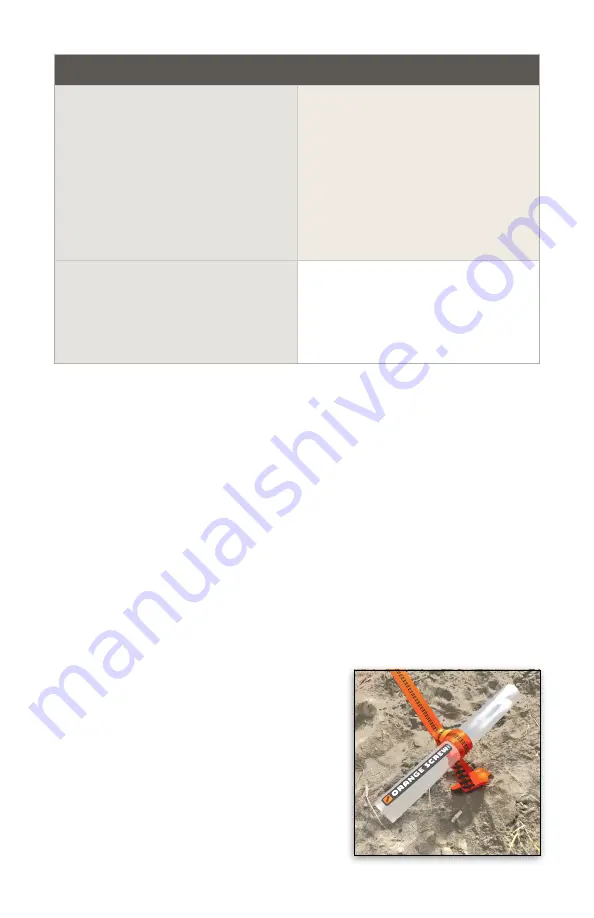
Anchoring
The foot end anchor must bear at least half of your body weight. Suitable anchors include
the bases of well-rooted shrubs, vehicles, large rocks or chinks in rock features, the hinge
pins of doors, handrails or other architectural features, shoes closed behind strong closet
or built-in cabinet doors, the frame of a bed atop which the stand is erected, etc. A truly
portable anchor for places with zero other opportunities is one or more collapsible water
vessels placed directly under the foot apex.
Use ground anchors when there are no suitable alternatives on site. Select the anchor for
the critical foot end based on the ground conditions, using the other for the less critical
head end. Anchors hold best placed as far away from the stand as the guylines allow, soil
conditions permitting.
Screw anchors are usually the best choice for soft to
medium-hard ground. If you hit an obstacle, you
can sometimes use the Tensa Boomstake to make a
pilot hole for the screw to enter more easily.
Tensa Boomstakes are best for ground too hard for
screw anchors, able to be pounded through softer
rock. In softer ground where the stake alone might
pull out, add the boom to make the stake act more
Head or feet touch poles
• Widen baseline.
• Shorten hammock suspension
overall, or lengthen on contact end,
shorten on non-contact end .
• If head touches, reduce stand tilt.
• If feet touch, increase stand tilt.
• Verify that stand feet are level.
• Cross poles so those nearest head
and feet are outboard.
Stand tips toward foot end
• Increase stand tilt to shi
f
t body
weight further toward head end.
• Shorten head end guyline enough to
prevent tip, but
not
make taut when
hammock empty.
Remedies
Problem
6















